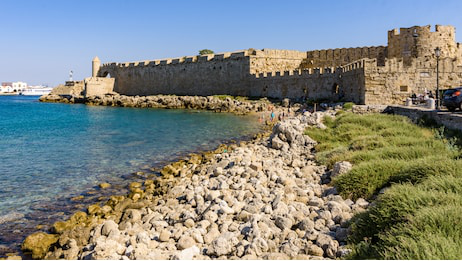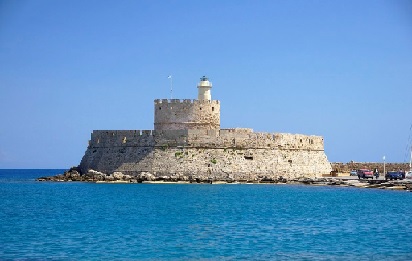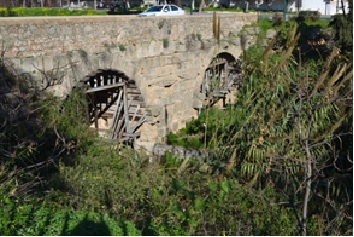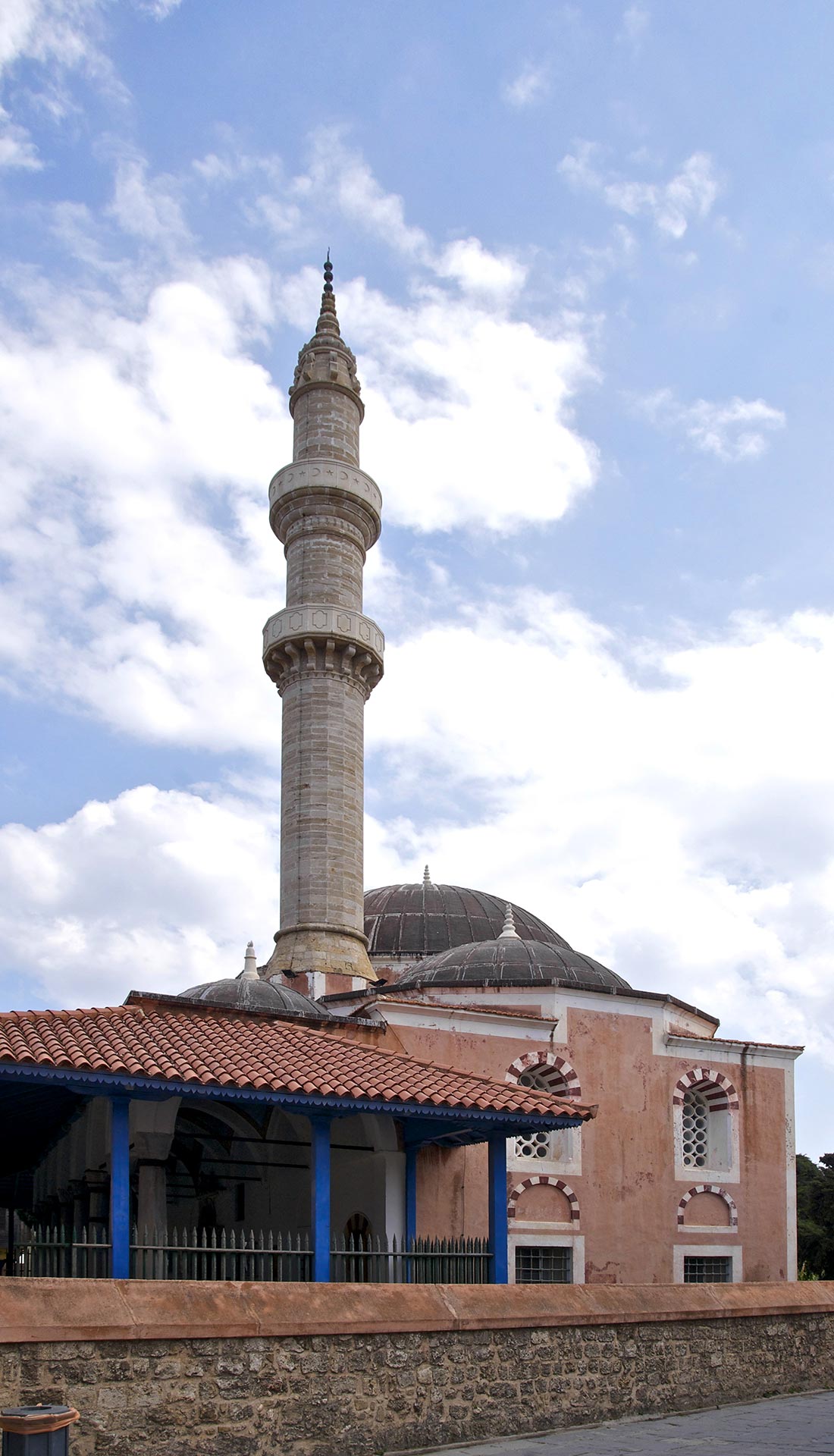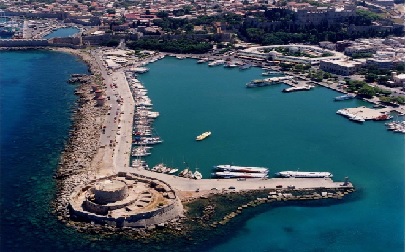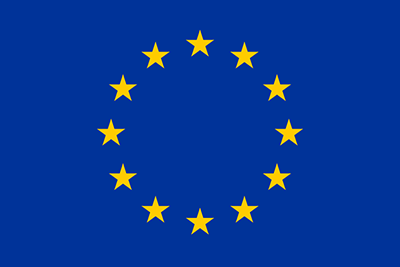The ancient city of Rhodes was founded in 408 BC. In the early 12th century, a new wall enclosed a rectangular area of 17.5 hectares. This town was conquered by the order of St John of Jerusalem occupied Rhodes (1309-1523). The medieval city of Rhodes (UNESCO world CH site) maintains the architectural character and the urban organization of a medieval city as well as its primary building materials, stone, wood and iron. The stone used for building came from two types of rock: sandy limestone that is more prevalent and mountain limestone. Most of the sandy limestone is biogenic with low mechanical tolerance and great lack of homogeneity. It is quite porous that makes it low quality material due to its great water absorbency. Another area of interest is Rodini showing special natural beauty and one of the few green lungs in the main city of Rhodes. In antiquity, it was part of the necropolis of the ancient city of Rhodes, but today it has a picture of abandonment.
General description of the historic area section considered for the demonstration activities
Within the medieval city places of interest are: a) The Mosque of Suleiman originally built in 1522 with a minaret of 34.5 m, amongst the highest in altitude areas of the medieval city b) The Marine Gate located at the waterfront lower than sea level constructed in 1478. In Rodini, a torrent crosses the interior of a narrow valley flanked by high rock fronts, along there are the monuments proposed in HYPERION: a) in the valley graves and cave sanctuaries, as well as landscaping configurations associated with the ancient park and b) shortly before the torrent ends up to the sea, the bridge of Roman times, one of the few surviving ancient bridges. The recording of the damages to these monuments that are directly related to their natural environment and the microclimate of the area, their degree of risk and the rate of their deterioration over time, as well as measures for their suppression/rehabilitation, will be surveyed in HYPERION.
Current equipment/infrastructure available
- Seismicity network: One station to monitor seismicity and two mari-graphs (tide gauges), part of the seismic network of the Hellenic Seismic Network (HL), which provides in n-RT waveform data exchange with more than 150 stations. The HL webpage provides simple seismicity inspection, automatic earthquake location based on SeisComP3, manual revision of earthquake locations performed by a seismologist analyst, moment tensor solutions from waveform inversion, seismic noise and station quality control automated assessment, etc.
- Near-Field Tsunami Early Warning and Emergency Planning (NEARToWARN): Four (4) early warning devices for warning in case of major local earthquakes. The main goal of NEARTOWARN is to promote technology with the aim to close the gap between the regional watch services scheduled to be provided by the North East Atlantic and Mediterranean Tsunami Warning System (NEAMTWS) coordinated by IOC/UNESCO and the need to warn for near-field tsunamis with travel times of the first wave to the closest shoreline being less than 30 min.
- Accelerometer network is installed along the island, part of the national network operated by the Institute of Engineering Seismology & Earthquake Engineering. The network communicates data in constant flow. This is equipped with wide range accelerometers, digitizers with a resolution of 24 bits and GPS.
- Meteorological stations: Five (5) meteorological stations are installed throughout the island. The data is directed to the National Observatory of Athens and are used for the weather forecast at http://www.meteo.gr/
- PREMARPOL (Prevention and Combating of Marine Pollution in Ports and Marinas): Two stations equipped with multi sensors are installed at the cruise port and “Akandia” commercial port within the city of Rhodes part of the PREMARPOL network. Sixteen (16) environmental indicators are recorded and data is provided in RT.
Wireless communication network: The municipality operates a wireless communication network with two VHF transmitters and another one for the prevention of natural disasters and protection of the environment of Rhodes.

